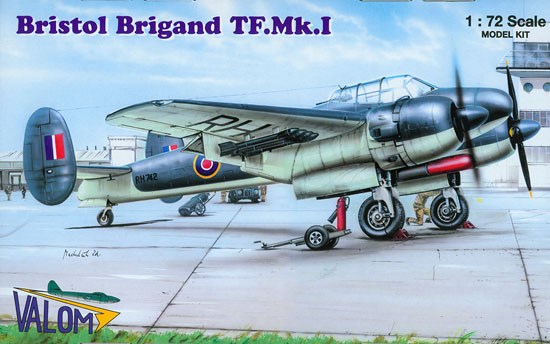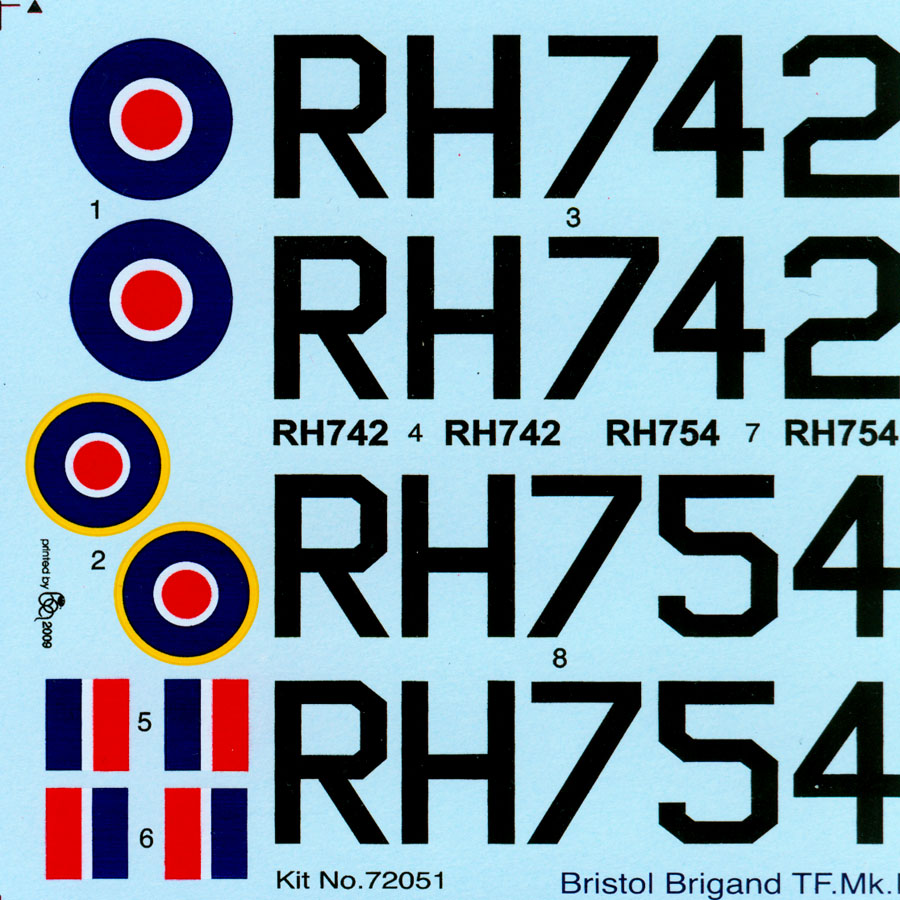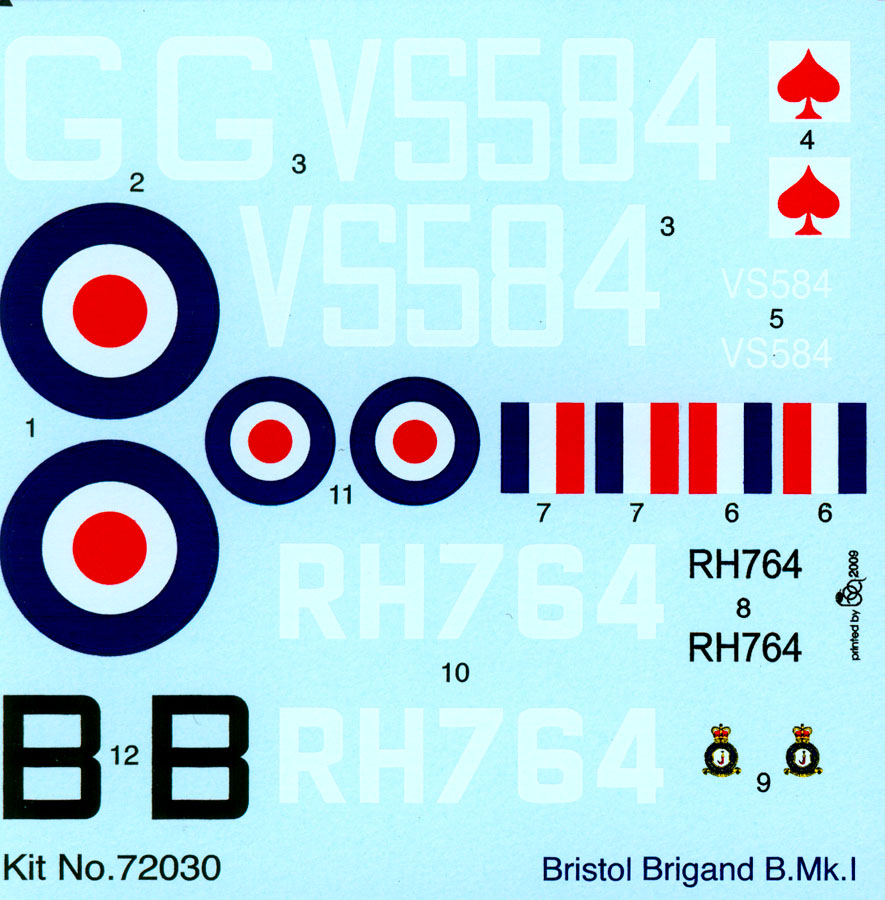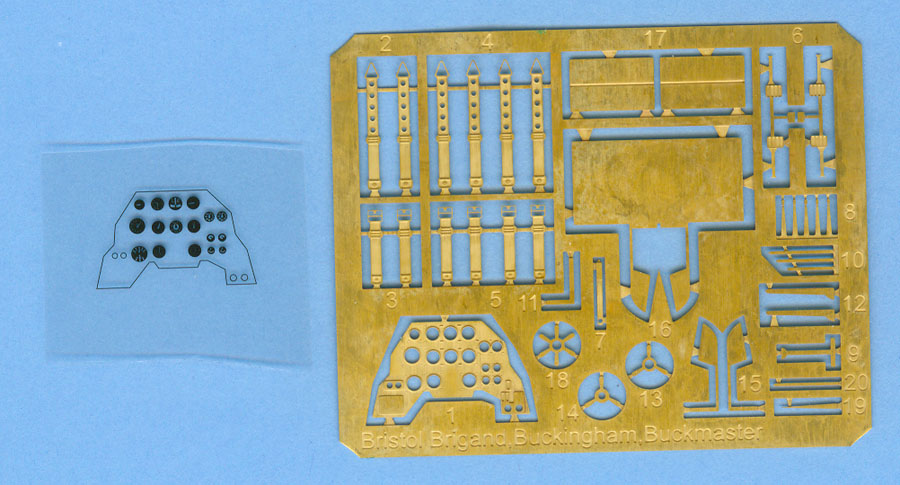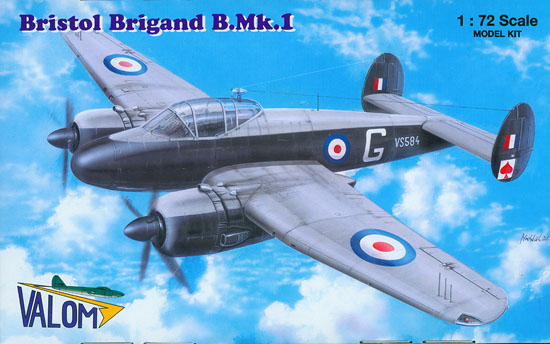
Valom 1/72 Bristol Brigand B Mk. I & TF Mk. I
By Chris Banyai-Riepl
Overview
The Bristol Brigand was the result for an uprated Beaufighter replacement that was both faster and had more range. To speed up production, the team at Bristol used the existing wing, tail, and landing gear of the Buckingham, and designed a new fuselage for the Brigand. The first Brigand took to the air in late 1944, but did not reach service until after the Second World War ended.
The Brigand did see combat, though, as 45 Squadron in Singapore transitioned to the type from their Beaufighters in late 1949. From their base at RAF Station Tengah, the Brigands of 45 Squadron supported British forces fighting against the communist insurgency in Malaya. In the following year, 84 Squadron joined 45 Squadron with their Brigands in this conflict. Rising issues with the aircraft ranging from the deterioration of the leather bellows on the air brake to problems with the main wing spar led to the retirement of the Brigand. The aircraft of 45 Squadron were replaced with de Havilland Hornets, while 84 Squadron was disbanded. The Brigands serving in 8 Squadron out of Aden were replaced by de Havilland Vampires.The Kits
Valom continues to put out some impressive models with some of the finest surface detailing out there, and their new Brigand kits are no exception. The differences between the TF Mk I and B Mk I are minimal, with each kit containing the same plastic, photoetch, and most of the resin. The plastic is molded in a medium gray plastic, with very petite recessed detailing. The resin provides the engines and scoops, and in the case of the TF.1, the torpedo. The decal sheets provide two options in each kit. Jumping right into the kit, as you'd expect construction begins with the interior. This is a blend of plastic and photoetch, with the latter providing the instrument panel and seatbelts, along with some other smaller details. The cockpit floor and seats are injection molded, along with the sidewall pieces and bulkheads. All together this should make for a fairly realistic interior, one that will be suitably busy under the clear one-piece canopy. Other interior fuselage details include the tailwheel bay and chin bays. Moving on to the wings, these are split into upper and lower halves, with separate engine nacelles. The latter are also split in half, with a separate insert for the wheel well. The landing dear itself is complex and will likely benefit from some brass pins for reinforcement. Once assembled, the landing gear and wheel bay should look quite good, capturing the look of the real thing nicely. While on the subject of flying surfaces, the tailplanes are a simple arrangement, with the stabilizer split into upper and lower halves and the vertical fins solid right and left pieces. Back to the nacelles, the cowlings are split in half, with a separate firewall. The resin engines are nicely done, and will look great once painted and detailed. The resin scoops for the cowlings are a nice touch as well, with crisp openings. The propellers have a separate hub and blades, which means you will have to be careful with alignment. I strongly recommend using a jig on these to ensure the proper blade angle on all four blades. For weaponry, the only difference between the two kits is the torpedo, which is provided in resin with photoetch fins. Both kits come with a full complement of rockets for under the wings. Loaded up with eight rockets, the Brigand looks formidable. Other small details include clear wingtip lights, and an ADF antenna and photoetch wingtip antennae for the B.1. The marking options are varied and will likely be the deciding factor in whether you choose the TF.1 or B.1. For the TF.1, there is an Extra Dark Sea Gray over Sky option, and an Extra Dark Sea Gray over white option. Both are from Filton in 1948, the first being RH742 and the second RH754. Aside from the camouflage and serials, the markings are pretty much identical, consisting of roundels in the usual positions and the serial on the fuselage side and lower wing surfaces. The B.1 also has two camouflage styles, the first being Extra Dark Sea Gray over black. This aircraft, which is depicted on the boxtop, is VS584 from 84 Squadron in Malaya. In addition to the fuselage code letter "G", this option also has a red spade on a white square on the vertical fin. The second option is RH764 from 8 Squadron at Aden, and is camouflaged in white over black. The low demarcation line makes this one interesting, with the aircraft letter "B" and fuselage serial done in black as a result. The decals in both kits are very nicely printed and should go down easily.Conclusion
These two kits would make for a great shelf mate to a Beaufighter (which they replaced) and Vampire & Hornet (which, in turn, replaced the Brigand). The quality of the kits is high, and their simple construction should make for a fun build. My thanks to Valom for the review samples.

